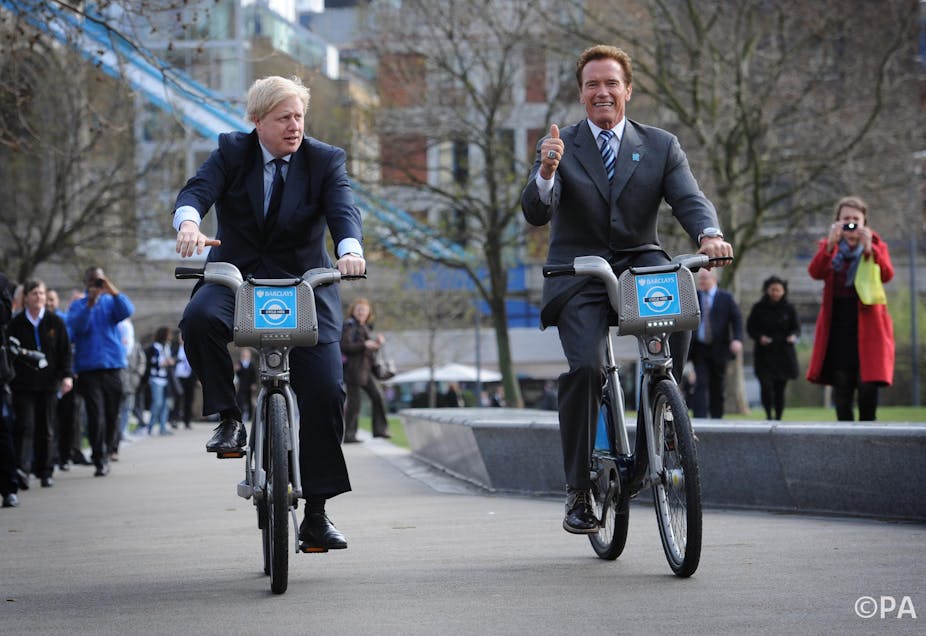As a London commuter, travelling from my neighbourhood to the city and back every day, I’ve often wondered how I could make better use of the London Cycle Hire Scheme – the “Boris Bikes” parked around the city centre.
Over the years I’ve become used to travelling seamlessly on the capital’s different modes of transport – the Underground, Overground, National Rail and buses. The key to this ease of travel is the direct pre-paid access granted to most public transport by the Oyster card – with one notable exception: the Barclays-blue Boris Bikes.
The cycle hire scheme does not accept the Oyster smart card, and I’ve not signed up to its separate membership system. The scheme as it is currently set up does not really fit with how I travel or my daily commute. It doesn’t seem sufficiently integrated into the rest of the city’s transport system.
This lack of integration prompted me to set a task for my students to re-think how the London Cycle Hire Scheme could work be adjusted to work better for commuters.
The students are looking at how to come up with useful concepts and apply them to coherent designs that add value to a service.
Each student team worked for up to ten weeks to develop, prototype and evaluate new service designs. Their remit was to rethink all aspects of the cycle hire service, from redesigning the bicycles themselves and introducing new smart technologies, to rethinking the softer aspects of the system related to safety and security. At the end of the process, they presented their service redesigns to representatives from Transport for London.
The student teams observed and understood how commuters currently use the Boris Bikes, and quizzed commuters as to what they wanted in the future from a bicycle rental service. Each design prototyped and evaluated their resulting service designs with commuters on the streets of London. The results were diverse, exciting and focused on different aspects of the service. Some new features might appear obvious, others less so:
Smart Oyster: an integrated travel smart card that included the cycle scheme as well as other modes of London transport. Introduced alongside a redesign of the payment system, this would come in the form of a swipe card readers built into the bike’s handle bars.
Redesigned docking station: to make them easier to use, more appealing and offer more services, such as a vending machine for bike equipment, interactive region map, protection from the weather, added lights and security.
Bike buddy scheme: an option to hire a “buddy” (an experienced cyclist) to help first timers or those new to London to get around the city. This would address safety concerns and offer the buddy in-kind payment through discounts or free bicycle hire. Such a proposal might help certain groups – for instance, older users – to make greater use of the cycle scheme.
Greater online integration: easier access to information about the scheme at London Underground and National Rail stations, and a membership scheme with various levels that brings benefits, discounts, or for example tracks mileage or calorie burning.
Redesigned to use space better: problems emerge when docking stations have no bikes, or no free spaces for others to leave them. Each docking station would have eight bicycle spaces, of which two would always be empty. Bicycles could be stored in underground lockers or raised or lowered as required. Whenever possible, docking stations should be integrated with bus stops to ease connections between modes of transport.
Comes with helmet and lock: one reason people don’t use bicycles is due to lacking a helmet, something most people who don’t own a bike would carry with them. This innovative idea combined the helmet and bicycle lock – unlock the bicycle and automatically obtain a helmet.
The student teams believe that their design suggestions could help Transport for London to have an even better understanding of the demographics of their users, but also of those who aren’t making use of the bike scheme, and why.
Would they change how you use or perceive the scheme?

